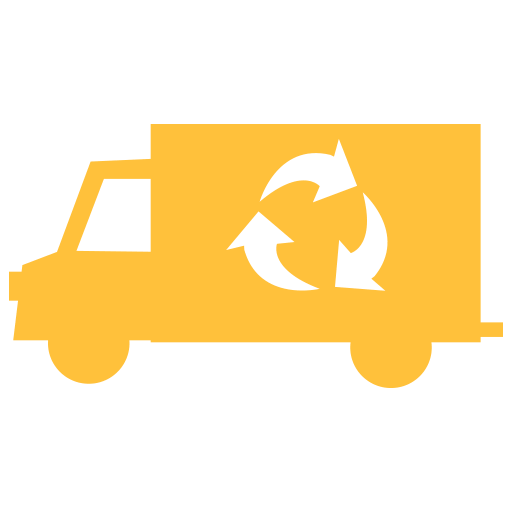Crafting Recycled Art with Kids
Posted on 23/09/2025
Crafting Recycled Art with Kids: Inspiring Creativity and Sustainability
Are you searching for fun and educational ways to engage your children in creativity while teaching them the importance of sustainability? Crafting recycled art with kids is not only a fantastic way to repurpose materials that would otherwise end up in landfills, but it also sparks imagination and critical thinking. In this comprehensive guide, we'll explore the best ideas, benefits, and tips for making art from recyclables, tailored for parents, teachers, and caregivers.

Why Recycled Art Projects are Important for Children
Recycled art activities offer more than just hands-on fun. They empower kids to:
- Understand environmental responsibility
- Develop fine motor skills
- Boost problem-solving abilities
- Foster teamwork and communication
- Build self-expression through unique creations
By transforming discarded items into beautiful recycled art projects, children experience the excitement of creating something new from something old, reinforcing the concept of reuse and upcycling.
Educational Benefits: What Children Learn from Upcycled Art
Crafting recycled art is more than just play; it's a powerful educational tool. Here's what your kids gain through these creative and eco-friendly projects:
- Science and Ecology: Children discover how recycling conserves resources and reduces waste.
- Arts and Design: Making recycled crafts enhances artistic skills and teaches color, texture, and spatial relationships.
- Critical Thinking: Problem-solving is a key component as kids figure out how to join various materials together.
- Social Skills: When done in groups, recycled art projects for children improve cooperation and communication.
How to Get Started with Recycled Art for Kids
Ready to start? Crafting artwork with recycled materials is easier than you might think! Follow these simple steps to set your young artists up for success:
1. Gather Materials
The first step is to collect a variety of recyclable items from around your home, school, or community. Common materials perfect for crafting eco art with kids include:
- Cardboard boxes, tubes, and cartons
- Plastic bottles, lids, and containers
- Jar lids and metal cans
- Old magazines and newspapers
- Fabric scraps, buttons, and ribbons
- Wine corks and bottle caps
- Broken toys and puzzle pieces
- Egg cartons and cereal boxes
- Shoes boxes and packaging materials
2. Organize a Creative Workspace
Choose a mess-friendly area with plenty of light and lay down a covering to protect surfaces. Have child-safe scissors, non-toxic glue, tape, markers, and paint on hand. Encourage kids to use their imagination and experiment with different materials and textures.
3. Discuss the Importance of Recycling
Before diving into projects, take a moment to talk about why recycling matters. Help kids realize their art is helping the planet by reducing waste. Ask questions like, "What would happen to these materials if we didn't use them for art?"
Top 10 Easy Recycled Art Ideas for Kids
To start your creative journey, consider these vibrant recycled art projects for children of all ages:
- 1. Bottle Cap Mosaics: Use colorful bottle caps to create mosaics on cardboard or wood. Arrange caps in unique patterns or pictures, then glue them down for a tactile, colorful effect.
- 2. Newspaper Animals: Twist and shape newspaper strips to form animals, then paint or decorate them. Add pipe cleaners for tails or whiskers.
- 3. Junk Sculpture: Stack and glue various recyclables (boxes, tubes, cups) to make robots, rocket ships, or imaginary creatures.
- 4. Tin Can Drums: Turn empty cans into musical instruments. Stretch fabric over the opening, secure with a rubber band, and start drumming!
- 5. Egg Carton Flowers: Cut and paint egg carton compartments into beautiful blossoms. Attach pipe cleaners or straws as stems.
- 6. Magazine Collage: Tear out colorful magazine pages to create abstract collage art, landscapes, or portraits.
- 7. Cardboard Animal Masks: Transform cereal boxes into masks, decorate with markers, paper scraps, and string for wearable fun.
- 8. Milk Jug Bird Feeders: Cut a hole in a clean milk jug, decorate it, and hang it outside filled with seeds for visiting birds.
- 9. Plastic Bottle Planters: Cut bottles in half, decorate the outside, and plant seeds or small flowers.
- 10. Puzzle Piece Picture Frames: Use old, mismatched puzzle pieces to create whimsical frames for photos or drawings.
All these recycled art activities for kids can be adjusted for age and skill level, making them perfect for home or classroom use.
Tips for a Successful Recycled Art Session
- Encourage Unstructured Creativity: Let children experiment without strict instructions. Some of the best kid-made recycled artwork comes from freely exploring materials.
- Practice Patience: Some projects require waiting for paint or glue to dry. Use this time to discuss what else could be made from leftover scraps.
- Celebrate Individuality: Every artwork is unique. Focus on the fun and learning, not perfection.
- Reuse and Recycle Leftovers: Any scraps left over from one project can become the inspiration for the next!
- Display Proudly: Show off your children's creations at home, school, or local community centers to boost their confidence.
Integrating Environmental Lessons
The beauty of crafting with recycled materials is the opportunity to reinforce environmental values alongside creativity. Consider integrating these lessons into your sessions:
- The Lifecycle of Everyday Objects: Discuss what happens to materials before and after we use them. Encourage kids to think about how art offers a new "life" to objects.
- Reduce, Reuse, Recycle: Teach the three R's by asking kids to brainstorm ways they already reduce waste at home, and what more they could do.
- Eco-Friendly Art Supplies: Highlight the importance of using non-toxic paint, plant-based glues, or even making natural dyes from fruits and vegetables.
Recycled Art for All Ages
Whether you're guiding preschoolers or older children, recycled art activities are adaptable for every skill level:
- Preschool: Focus on sensory experiences--exploring shapes, textures, and colors.
- Elementary: Encourage more complex projects like collages or functional recycled crafts (e.g., pencil holders or storage bins).
- Tweens and Teens: Challenge older kids to design wearable art or mixed media sculptures.
Making Recycled Art a Habit at Home
Help make upcycled artwork a natural part of your family's routine by:
- Setting Up a Recycling Station: Dedicate bins or boxes for collecting materials like paper, plastic, and fabric scraps.
- Sparking Inspiration: Keep an "ideas book" of crafts to try, and encourage kids to clip pictures from magazines or draw their own concepts.
- Collaborate Regularly: Set aside a weekly "Eco Art Hour" for the whole family to craft and connect.
Turning Recycled Art into a Community Project
Bring the joy and impact of recycled kids art projects to your neighborhood or school:
- Community Mural: Organize a large-scale mural using bottle caps, plastic lids, or painted cardboard contributed by multiple families.
- Art Show: Host a "Green Art" exhibition at a local library or center, showcasing creations and sharing recycling tips.
- Group Workshops: Arrange a crafting day during Earth Week or World Environment Day to highlight the creative side of conservation.

Conclusion: Fostering Artists and Environmental Stewards
Crafting beautiful, meaningful recycled art with kids is a powerful way to nurture both artistic talent and eco-conscious values. With a little imagination, everyday household items become the foundation for masterpieces that delight, educate, and inspire change. From bottle cap mosaics to magazine collages, the world of upcycled art is only limited by your child's creativity.
Start your recycled art journey today! Whether you're a parent, teacher, or community leader, these projects offer a memorable way to bond and make a difference. Remember, every masterpiece made from "trash" is a small step toward a cleaner, greener tomorrow.
FAQs on Crafting Recycled Art with Children
Q: What is the best age for starting recycled art projects?
Kids as young as two or three can begin exploring simple recycled crafts with supervision, while older children can take on more complex projects. Always choose age-appropriate materials and tools.
Q: How can I make recycled art safe for young children?
Use only clean, non-toxic, and age-appropriate materials. Avoid sharp objects, glass, or hazardous substances. Supervise younger children closely, especially when using glue, scissors, or small items that could pose a choking hazard.
Q: How do I encourage reluctant kids to participate in recycled crafts?
Let children choose the materials and type of project, and don't insist on perfection. Display their finished work prominently and celebrate their creativity to build confidence and enthusiasm.
Q: What's the environmental impact of crafting with recycled materials?
Recycled art reduces waste by diverting items from landfills and teaching the next generation about sustainability and responsibility--one creative project at a time!
Join the movement of crafting recycled art with kids, and help them become creative, caring caretakers of our planet!

 020 3875 4102
020 3875 4102 020 3875 4102
020 3875 4102




 House clearance
House clearance Rubbish collection
Rubbish collection





